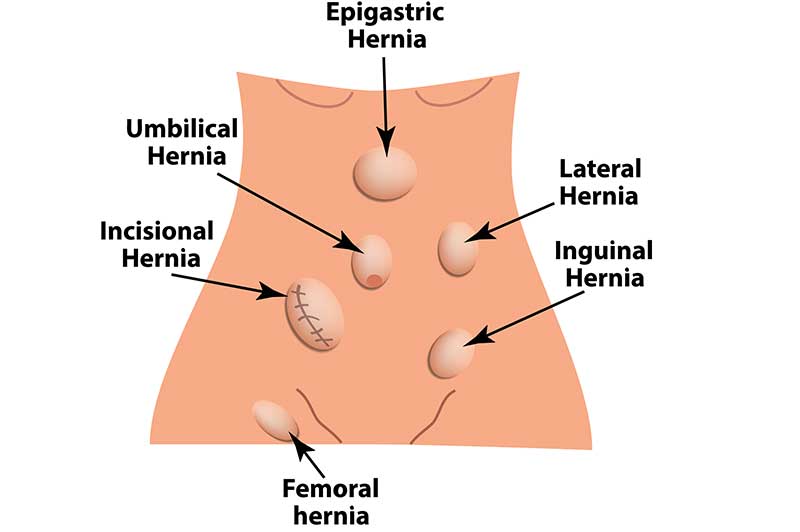

Often characterized by an explained bulge in the groin or upper thigh area that’s also causing some degree of discomfort, a femoral hernia develops because of a weakness in a groin muscle.
Because a femoral hernia can be confused with an inguinal hernia, it’s important to receive an accurate diagnosis before proceeding with treatment.
A femoral hernia will not heal itself and it can become worse over time if not treated. One surgical option is laparoscopic repair.
What Happens Before Surgery?
It’s usually mid-size and larger femoral hernias causing discomfort that require surgery rather than periodic observation. Prior to laparoscopic femoral hernia repair, an ultrasound may be performed to confirm the extent of the defect in the muscle wall. Patients are also typically evaluated to determine if a less invasive approach to hernia repair is appropriate.


How is Laparoscopic Femoral Hernia Repair Performed?
Femoral hernia surgery performed this way is normally done as an outpatient procedure under general anesthesia. During the procedure, one small incision is made for the laparoscope, a special lighted scope attached to a camera that provides visual guidance for the GI doctor performing the operation. Additional small incisions are made for other surgical instruments.
The weakened part of the muscle lining where tissues are pushing through (hernia sac) is then isolated. If the tear or defect is small, it may be corrected with sutures. Mesh material is normally used for muscle wall tears that are larger. While this is the standard procedure for larger tears, it may not be used on patients with an underlying condition that prevents the use of mesh material.
After the defect is corrected, the special surgical instruments are removed. Sutures are usually used to close the small incisions. They are normally removed during a follow-up visit and replaced with either a special type of glue or steri-strips (sticky bandages).
What Happens After Surgery?
Patients are usually observed for a brief period of time following the procedure as the anesthesia wears off. It’s normal to have some tenderness or minor discomfort in the affected area until tissues fully heal. Instructions will be given about such things as bathing and daily activities. Most patients are able to resume their normal activities within two to four weeks after having laparoscopic femoral hernia repair.
During the recovery period, it’s advised that patients avoid any movements or actions that could strain the groin area, especially if surgical mesh was inserted. Stool softeners or diet modifications may be recommended to reduce issues with post-surgery constipation or difficult bowel movements.
When compared to open surgery, laparoscopic femoral hernia repair is an approach to hernia repair that tends to result in fewer risks and less post-operative pain. Recurrence rates with femoral hernias are very low. According to one estimate, only one percent of individuals who’ve had a femoral hernia repaired will develop another internal organ/tissue bulge in the same area. Even so, it’s typically advised that anyone who’s had hernia issues make an effort to avoid excess groin or abdominal straining to further reduce the risk of hernia problems.

